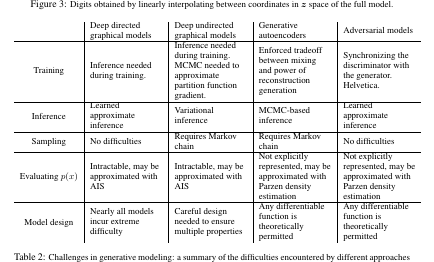Generative Adversarial Networks (GANs) have gained significant attention in the field of deep learning, recognized for their ability to generate realistic data. This blog post simplifies the core concepts of GANs, their architecture, and their applications based on the insights from the foundational paper on the subject.
What Are GANs?
GANs propose a novel framework for estimating generative models through an adversarial process. This involves training two models simultaneously: a generator (G) that learns to capture the data distribution and a discriminator (D) that assesses whether a sample is from the training data or generated by G. The training goal for G is to maximize the probability of D making a mistake, effectively engaging both models in a two-player minimax game[1].
The Architecture
In GANs, the generator produces samples that mimic the real data, and the discriminator evaluates these samples. The training process can be described mathematically as:
[
\min_G \max_D V(D, G) = \mathbb{E}{x \sim p(x)}[\log D(x)] + \mathbb{E}_{z \sim p_z(z)}[\log(1 - D(G(z)))]
]
This equation reveals that the discriminator's role is to distinguish real from generated samples while the generator aims to improve its output to fool the discriminator[1].
Training Process
The authors discuss a systematic approach to training both models effectively. They detail how alternating between updating D and G is crucial for optimal performance. D is trained to differentiate between real and fake samples, while G is updated to generate samples that can deceive D[1].
Early in the training, if G produces poor samples, D can easily reject them, leading to saturation of the training signal. As training progresses, the authors emphasize that D must be kept at near-optimal performance so that G can learn from meaningful feedback, thus enhancing its ability to generate realistic samples[1].
Theoretical Foundations
The paper delves into the theoretical basis of GANs, establishing that under certain conditions, the generator can learn to approximate the true data distribution effectively. The theoretical underpinnings focus on the interplay between the two networks, highlighting how their competitive nature drives the entire generation process[1].
The authors also present algorithms for implementing GANs, focusing on refining the generator and discriminator steps. They advise that during training, one must be cautious of how updates to G and D might affect the stability of the overall system[1].
Challenges and Advantages

Despite their innovative approach, GANs face specific challenges. For instance, they may struggle with convergence and mode collapse, where the generator produces limited variations of outputs. Moreover, the framework requires careful synchronization between G and D during training to ensure that they contribute effectively to the learning process[1].
However, the advantages of GANs are compelling. They enable the generation of high-dimensional samples without the need for explicit probabilistic modeling. The flexibility of the architecture also allows it to be applied in various contexts, from image generation to data augmentation in machine learning tasks[1].
Applications
GANs have far-reaching applications across numerous domains. They are utilized in generating images, enabling artistic creation, enhancing training datasets, and even creating synthetic data for privacy-preserving purposes. The paper illustrates their efficacy by comparing generated samples from GANs against traditional models, showcasing the high quality achieved through this framework[1].
Furthermore, GANs have sparked interest in research areas such as semi-supervised learning, where they help in improving classifier performance when labeled data is scarce. The ability of GANs to learn from unlabelled data demonstrates their versatility and potential for future advancements in machine learning[1].
Conclusion
Generative Adversarial Networks represent a significant leap forward in data generation techniques, combining a competitive learning process with the power of deep learning architectures. The insights provided in the foundational paper outline not only the mechanics of GANs but also their practical implications and the myriad of challenges they present. As research continues to evolve, GANs are likely to play a pivotal role in the future of artificial intelligence and data science, ushering in new techniques and applications that we have yet to fully explore[1].
Get more accurate answers with Super Pandi, upload files, personalized discovery feed, save searches and contribute to the PandiPedia.
Let's look at alternatives:
- Modify the query.
- Start a new thread.
- Remove sources (if manually added).